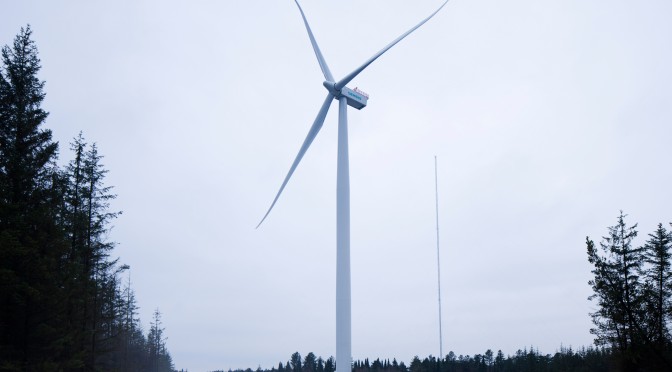Siemens Energy launched its new offshore wind turbine – the SWT 4.0-130.
This new wind turbine features a generating capacity of four megawatts (MW) and a rotor diameter of 130 meters.
The new design is a further advancement of the popular SWT 3.6 family, more units of which have been sold and installed worldwide than any other offshore wind turbine.
Siemens took the opportunity of the EWEA Conference to also introduce its new platform concept for wind turbines.
In the future, each of Siemens’s wind turbine types will be bundled under the umbrella of one of four product platforms. The objective of this platform strategy is to standardize and modularize the products.
Siemens new SWT 4.0-130 wind turbine utilizes all of the key technologies of the proven 3.6-MW family. The nacelle and tower are advanced variants of the 3.6-MW wind turbine design. The rotor blades are manufactured using Siemens’ proven IntegralBlade process, cast in a single piece without use of adhesive bonding. The new B63 rotor blade, measuring 63 meters in length, is the longest and technologically most advanced blade in the 4-megawatt class. The B63 sweeps an area equivalent almost to the size of two football fields. Thanks to optimized coupling of blade bending and twisting, these aeroelastic blades react more flexibly to high wind loads, absorbing forces similarly to the cushioning effect of shock absorbers on cars. This technology allows use of longer rotor blades, which boosts wind power capture and thus increases unit performance.
Since December 2012, the prototype of the SWT 4.0-130 has been installed and commissioned at the Osterild Test Center in Denmark and is showing excellent performance. Serial production is expected to commence in 2015. “The advancements designed into the SWT 4.0-130 increase energy capture by up to 15 percent over our best-selling SWT 3.6-120 type”, says Henrik Stiesdal, Chief Technology Officer at Siemens’ Energy Sector’s Wind Power Division.
Siemens’ new platform design concept constitutes a further step in the industrialization of the wind power sector. Following the model of the automotive industry, all wind turbines are bundled under the umbrella of a product platform. Each unit consists of five or six modules which are used within a single platform for various different turbines. “We can reduce production and logistics costs by standardizing and modularizing components within our product platforms. This is a major step towards achieving our goal of making wind power independent from subsidizing”, notes Stiesdal.
With its 4-MW output, the SWT 4.0-130 wind turbine joins the well-known 3.6-MW turbines in the Siemens G4 platform. The name of each platform is dictated by a combination of the applied drive technology and the performance class of the wind turbines. Platforms based on geared technology are denoted by the letter “G” (for “geared drive”), while product platforms featuring gearless technology are identified by the prefix “D” (for “direct drive”).
In the future, each of the wind turbines offered by Siemens will belong to one of the platforms Siemens G2, Siemens G4, Siemens D3 or Siemens D6. The name of each platform is dictated by a combination of the applied drive technology and the performance class of the wind turbines. Platforms based on geared technology are denoted by the letter “G” (for “geared drive”), while product platforms featuring gearless technology are identified by the prefix “D” (for “direct drive”). With its 4-MW output, the SWT 4.0-130 wind turbine joins the well-known 3.6-MW turbines in the Siemens G4 platform.
Wind Power is part of Siemens’ Environmental Portfolio. In fiscal 2012, revenue from the Portfolio totaled about €33 billion, making Siemens one of the world’s largest suppliers of ecofriendly technologies. In the same period, our products and solutions enabled customers to reduce their carbon dioxide (CO2) emissions by more than 330 million tons, an amount equal to the total annual CO2 emissions of Berlin, Delhi, Hong Kong, Istanbul, London, New York, Singapore and Tokyo.




